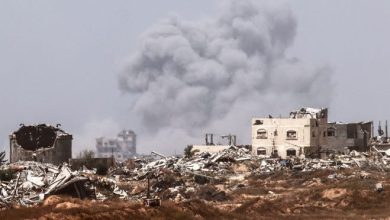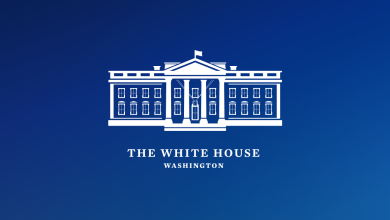Why Russia struggled to stop Ukrainian incursion into Kursk region
After three weeks of fighting, Russia is still struggling to dislodge Ukrainian forces from Kursk regiona surprisingly slow and muted response to the first occupation of its territory since World War II.
It all comes down to Russian labor and Russian priorities.
With the bulk of its military forces under pressure offensives inside UkraineThe Kremlin currently appears to lack sufficient reserves to drive out kyiv’s forces.
President Vladimir Putin He does not appear to view the attack – or at least give the impression that he does – as a serious enough threat to warrant withdrawing troops from the Donbass region of eastern Ukraine. priority target.
“Putin is focused on the collapse of the Ukrainian state, which he believes will automatically render any territorial control useless,” writes Tatiana Stanovaya, a senior fellow at the Carnegie Russia Eurasia Center.
Putin’s Priorities
Months after launch large-scale invasion In 2022, Putin illegally annexed the Ukrainian regions of Donetsk, Luhansk, Zaporozhye and Kherson to Russian territory, and their complete capture is a top priority. He said in June that kyiv must withdraw its forces from parts of these regions it controls as a condition for peace talks, a demand Ukraine rejects.
“In massing its forces to confront the Ukrainian incursion, Russia is doing everything it can to avoid withdrawing units from its own offensive in Donbas,” said Nigel Gould-Davies of the International Institute for Strategic Studies. “Russia currently believes it can contain the threat on its own soil without compromising its most important objective in Ukraine.”
As Ukrainian forces entered Kursk on August 6, Russian troops continued their slow advance around the strategic city of Pokrovsk and other parts of Donetsk region.
“Russia is very keen to continue its attacks on Pokrovsk and not to transfer resources from Pokrovsk to Kursk,” said Nico Lange, a senior fellow at the Washington-based Center for European Policy Analysis.
Unlike Pokrovsk, where Ukrainian forces have built extensive fortifications, other parts of Donetsk still under Ukrainian control are less protected and could be much more vulnerable to Russian assault if Pokrovsk falls.
In his televised talks with Kursk region officials, Putin described Kiev’s incursion as an attempt to slow down Russia’s campaign in Donetsk. He said the Russian advance in the region has only accelerated despite the events in Kursk.
To pressure Ukraine to comply, Russia has also launched a series of long-range strikes on the power grid. Monday’s attack on energy facilities was one of the largest and most devastating of the war, involving more than 200 missiles and drones and causing widespread power outages. It exposed the weaknesses of Ukraine’s air defenses, which are designed to protect frontline troops as well as infrastructure.
Minimize the incursion
Focused on conquering Ukraine’s four regions, Putin has sought to give little importance to kyiv’s incursion into Kursk.
“Rather than rallying the population against a threat to the motherland, the Kremlin is seeking to downplay the incursion,” said Gould-Davies of the London-based IISS.
Faced with the reality of the occupation of Russian territory, the state propaganda machine sought to divert attention from the obvious military failure by focusing on the government’s efforts to help more than 130,000 residents displaced from their homes.
State-controlled media presented the Kursk attack as evidence of kyiv’s aggressive intentions and further proof that Russia was justified in invading Ukraine on February 24, 2022.
Stanovaya noted that while many Kursk residents may be angry with the Kremlin, the general national sentiment may actually be in favor of the authorities.
“While this is a reputational blow to the Kremlin, it is unlikely to trigger a significant increase in social or political discontent among the population,” she said. “The Ukrainian attack could actually lead to a rally around the flag and a rise in anti-Ukrainian and anti-Western sentiments.”
A limited response from the Kremlin
Ukrainian military chief Gen. Oleksandr Syrskyi said his forces controlled nearly 1,300 square kilometers (about 500 square miles) and about 100 settlements in the Kursk region, a claim that could not be independently verified.
With the fighting situation in Kursk constantly evolving, unlike the static front lines in Donetsk, Ukrainian units could roam the region without establishing a lasting presence in many of the settlements they claim.
Observers believe that Russia does not have sufficiently well-coordinated resources to drive Ukrainian forces out of Kursk.
“Moscow’s efforts to counter the renewed Ukrainian offensive appear limited to sending units from across Russia, including some militias and irregular forces,” Ben Barry, senior land warfare researcher at the IISS, said in a commentary.
Until the Kursk raid, Putin had refrained from using conscripts to avoid a negative public reaction. Young conscripts, called up for a one-year mandatory service, served far from the front, and those deployed to protect the border in the Kursk region became easy prey for Ukraine’s battle-hardened mechanized infantry units. Hundreds of them were captured, and 115 were exchanged for Ukrainian soldiers over the weekend.
Commentators have noted that Putin is also reluctant to call up more reservists, fearing domestic destabilization like what happened when he ordered a highly unpopular mobilization of 300,000 people in response to a Ukrainian counteroffensive in 2022. Hundreds of thousands have fled Russia to avoid being sent into combat.
Since then, the Kremlin has bolstered its forces in Ukraine with volunteers attracted by relatively high salaries, but that flow has declined in recent months.
It would take tens of thousands of troops to completely dislodge the Ukrainian force, estimated at 10,000, which was using the area’s dense forests as cover.
Clearly lacking the resources for such a large-scale operation, Russia has so far focused on stemming deeper Ukrainian advances by blocking roads and targeting kyiv’s reserves – tactics that have been partially successful.
Meanwhile, Ukraine has disconcerted the Russian military by destroying bridges over the Seym River, disrupting the logistics of some Russian units in the region and creating conditions for the establishment of a pocket of control.
Lange predicted that Ukrainian troops could use the river to create a buffer zone.
“I expect the Ukrainians to find a few more choke points for Russian logistics and infrastructure, not necessarily just bridges, and take them under control,” he said.
Risks for Ukraine
By seizing a chunk of Russian territory, Ukraine has embarrassed the Kremlin and reshaped the battlefield. But diverting some of the country’s most effective forces from the east is a risky bet for kyiv.
“All of this carries considerable risks, particularly if an attempt to overextend Russian forces results in overextending the smaller Ukrainian forces,” according to the IISS’s Barry.
An attempt to gain a foothold at Kursk would further extend the front line by more than 1,000 kilometers, complicating matters for the Ukrainian forces, which are undermanned and under-armed. Defending positions inside Russia would pose serious logistical problems, with extended supply lines becoming easy targets.
“The Russian system is very hierarchical and rigid, so it always takes them a long time to adapt to a new situation,” Lange said, “but we will have to see how Ukraine can withstand it, once Russia adapts and comes in force.”
___
See AP’s full coverage at https://apnews.com/hub/ukraine#




